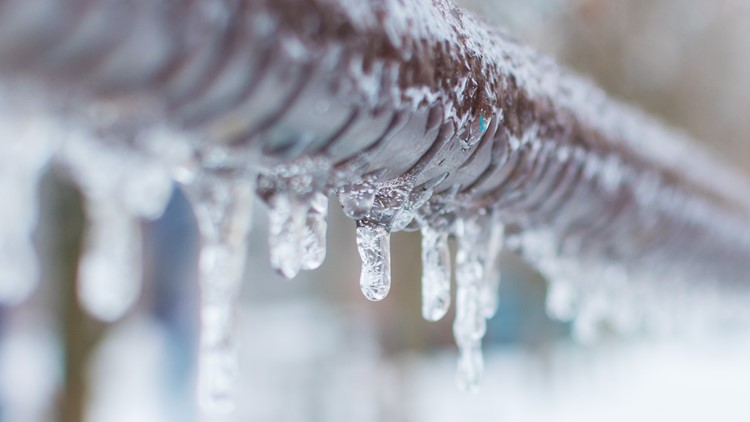Avoiding Frozen Plumbing in Cold Weather: Pro Tips
Avoiding Frozen Plumbing in Cold Weather: Pro Tips
Blog Article
Everybody has got their own individual rationale when it comes to How to prepare your home plumbing for winter weather.

Winter can wreak havoc on your plumbing, especially by freezing pipelines. Here's how to stop it from occurring and what to do if it does.
Intro
As temperatures decrease, the risk of icy pipes increases, possibly bring about pricey repair services and water damage. Understanding just how to avoid frozen pipelines is vital for house owners in cold environments.
Prevention Tips
Shielding at risk pipes
Cover pipes in insulation sleeves or make use of warm tape to protect them from freezing temperature levels. Focus on pipelines in unheated or exterior locations of the home.
Heating methods
Maintain interior spaces sufficiently warmed, especially locations with pipes. Open up cupboard doors to permit warm air to flow around pipes under sinks.
Exactly how to recognize frozen pipes
Seek reduced water flow from faucets, uncommon odors or noises from pipelines, and noticeable frost on subjected pipelines.
Long-Term Solutions
Structural changes
Think about rerouting pipelines far from outside walls or unheated locations. Include extra insulation to attics, basements, and crawl spaces.
Updating insulation
Buy top notch insulation for pipelines, attic rooms, and wall surfaces. Proper insulation helps maintain consistent temperatures and minimizes the danger of icy pipelines.
Shielding Exterior Pipes
Yard hoses and outside faucets
Separate and drain yard hoses before winter season. Mount frost-proof faucets or cover exterior taps with insulated caps.
Comprehending Icy Pipes
What causes pipes to ice up?
Pipelines ice up when revealed to temperatures below 32 ° F (0 ° C) for prolonged durations. As water inside the pipelines ices up, it increases, taxing the pipeline wall surfaces and potentially causing them to rupture.
Dangers and problems
Frozen pipelines can result in supply of water interruptions, building damage, and expensive repair services. Ruptured pipes can flood homes and trigger considerable structural damages.
Indicators of Frozen Pipeline
Determining frozen pipelines early can stop them from rupturing.
What to Do If Your Pipes Freeze
Immediate activities to take
If you believe frozen pipes, maintain taps available to ease pressure as the ice thaws. Use a hairdryer or towels taken in hot water to thaw pipelines slowly.
Conclusion
Stopping icy pipes calls for proactive actions and quick feedbacks. By understanding the reasons, signs, and preventive measures, home owners can safeguard their plumbing throughout winter.
5 Ways to Prevent Frozen Pipes
Drain Outdoor Faucets and Disconnect Hoses
First, close the shut-off valve that controls the flow of water in the pipe to your outdoor faucet. Then, head outside to disconnect and drain your hose and open the outdoor faucet to allow the water to completely drain out of the line. Turn off the faucet when done. Finally, head back to the shut-off valve and drain the remaining water inside the pipe into a bucket or container. Additionally, if you have a home irrigation system, you should consider hiring an expert to clear the system of water each year.
Insulate Pipes
One of the best and most cost-effective methods for preventing frozen water pipes is to wrap your pipes with insulation. This is especially important for areas in your home that aren’t exposed to heat, such as an attic. We suggest using foam sleeves, which can typically be found at your local hardware store.
Keep Heat Running at 65
Your pipes are located inside your walls, and the temperature there is much colder than the rest of the house. To prevent your pipes from freezing, The Insurance Information Institute suggests that you keep your home heated to at least 65 degrees, even when traveling. You may want to invest in smart devices that can keep an eye on the temperature in your home while you’re away.
Leave Water Dripping
Moving water — even a small trickle — can prevent ice from forming inside your pipes. When freezing temps are imminent, start a drip of water from all faucets that serve exposed pipes. Leaving a few faucets running will also help relieve pressure inside the pipes and help prevent a rupture if the water inside freezes.
Open Cupboard Doors
Warm your kitchen and bathroom pipes by opening cupboards and vanities. You should also leave your interior doors ajar to help warm air circulate evenly throughout your home.
:strip_icc()/snow-outdoor-faucet-pipes-4af65d1e5e904fb1aa7bf74071fe5d89.jpg)
I stumbled upon that page about How to prepare your home plumbing for winter weather while doing a search on the internet. Sharing is caring. Helping people is fun. Many thanks for taking the time to read it.
Request A Quote Report this page